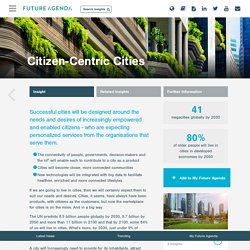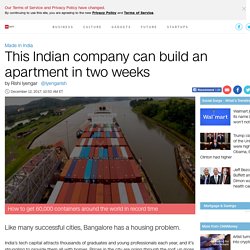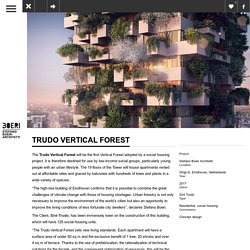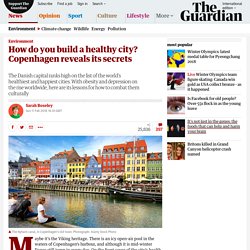

Urban Obesity. Mass urbanisation, reduced activity and poor diets are accelerating the rise of obesity.

Levels of obesity in most cities are growing fast and the associated healthcare burden will soon account for 5% of global GDP. In China over 25% of the adult population was overweight or obese In Kenya, Sengal and Ghana urban obesity is running at twice the level found in rural areas Expect to see more banned junk food in schools, more fat taxes on carbonated drinks and other sources of sugar The obesity epidemic has been a major concern for many developed countries for a number of years. However, with increasing urbanisation and sedentary lifestyles in other regions, it is now accelerating as a primary health issue in India, China and other fast-shifting nations across Asia and Africa. While many in some rural communities are still suffering from poor nutrition, their fellow citizens in the cities are increasingly overweight and obese. In China over 25% of the adult population was overweight or obese. Sometimes Nomads. Elective migration, cheap travel, international knowledge sharing, and increasingly transient working models create connected nomads who mix the traditions of home with the values and customs of their host location.

Many people who migrate for professional reasons use their education as a ticket to riches Fewer than 10% of US college students travel abroad in their undergraduate years Blended cultures may become the new norm People move around for all sorts of different reasons, good and bad. Citizen-Centric Cities. Successful cities will be designed around the needs and desires of increasingly empowered and enabled citizens - who are expecting personalized services from the organisations that serve them.

The connectivity of people, governments, decision-makers and the IoT will enable each to contribute to a city as a product Cities will become closer, more connected communities New technologies will be integrated with big data to facilitate healthier, enriched and more connected lifestyles If we are going to live in cities, then we will certainly expect them to suit our needs and desires. Cities, it seems, have always have been products, with citizens as the customers, but now the marketplace for cities is on the move. Fitting Growing Kids Into Small Spaces. Landscape_as_playscape_the_effects_of_natural_environments_on_childrens_play_and_motor_development. Chicago's "playscapes": Changing how we use parks · Chicago Architecture Center - CAC. #trunkortreat hashtag on Instagram. Trunk Or Treat: New Tradition Could Change Halloween As We Know It. Move over trick or treat, there's a new gig in town and it's called trunk or treat.

Originally started by church groups with the aim of providing a safer environment for trick-or-treaters on Halloween, trunk or treat involves a community coming together in a parking lot, either on the 31st or shortly before, so that children can trick-or-treat out of the decorated trunks of their cars. If trunk-or-treating hasn't hit your town yet, odds are it soon will because the door-to-door alternative is gaining in popularity, owing in part to the convenience inherent in condensing a large volume of candy into a small area (read: less walking), but mostly for the opportunity it affords holiday decor enthusiasts, to get creative with their trunks.
Like anything, however, trunk or treat has its detractors. Marie Kondo Says You Can Have More Than 30 Books, Just Wake Them Up First. Towards a Smaller Housing Paradigm: a Literature Review of Access. 5 Demographic Trends Shaping The World. Mobility Companies Now Have 10 Commandments for Fixing Cities. Container apartments: The answer to Bangalore's housing shortage? - Dec. 12, 2017. India's tech capital attracts thousands of graduates and young professionals each year, and it's struggling to provide them all with homes.

Prices in the city are going through the roof, up more than 130% since 2010, according to data from the Reserve Bank of India. Hemant Attray and Rajesh Kotta thought they had the answer when they founded SquarePlums in February 2016 to provide affordable housing. They soon found they couldn't build homes fast enough to keep pace with demand. "Whenever we open up a new property... immediately there is a kind of mad rush," Attray told CNNMoney.
It takes anywhere from 18 months to three years to construct a new building using traditional methods. An apartment block in two months The fully-furnished studio apartments measure around 200 square feet. SquarePlums has two such complexes in the works, the first of which it is aiming to unveil within the next month. Stefano Boeri Architetti. The Trudo Vertical Forest will be the first Vertical Forest adopted by a social housing project.

It is therefore destined for use by low-income social groups, particularly young people with an urban lifestyle. The 19 floors of the Tower will house apartments rented out at affordable rates and graced by balconies with hundreds of trees and plants in a wide variety of species. How do you build a healthy city? Copenhagen reveals its secrets. Maybe it’s the Viking heritage.

There is an icy open-air pool in the waters of Copenhagen’s harbour, and although it is mid-winter Danes still jump in every day. On the front cover of the city’s health plan, a lean older man is pictured climbing out, dripping, his mouth open in a shout that could be horror or pleasure. “Enjoy life, Copenhageners,” urges the caption. It’s not every Copenhagener who wants to take strenuous exercise in cold water either for fun or to get fit. But the packed bike lanes of the Danish capital, even at this sometimes subzero time of year, are testimony to the success of a city that is aspiring to be one of the healthiest in the world. Cities do, of course, spawn in response to the need for people to have roofs over their heads; somewhere to eat and sleep within striking distance of their job. Obesity and its related ills – heart disease, diabetes and cancer – have thrived in these cities. “We bike all the time. The Hard Truths of Trying to ‘Save’ the Rural Economy.